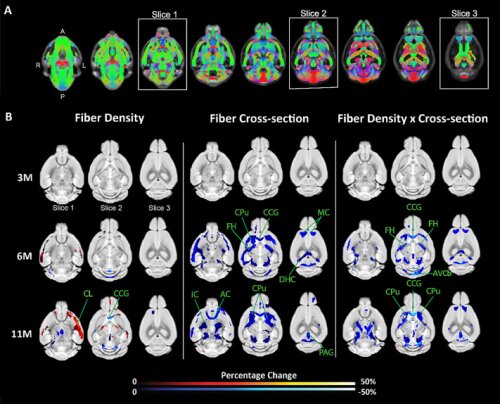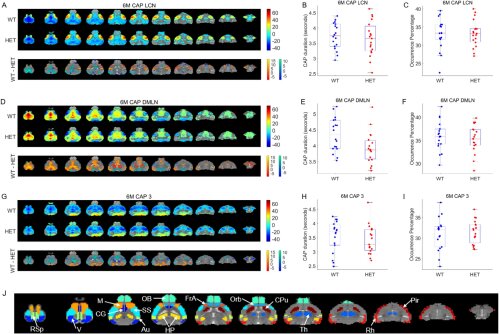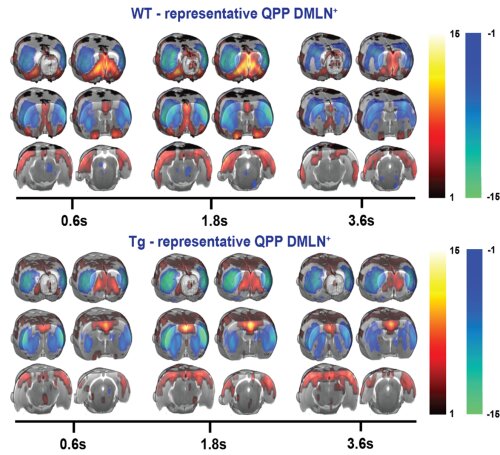Neuro(de)generation
The aim of this team is to define in vivo, quantifiable and sensitive Magnetic Resonance Imaging (MRI) markers that allow early detection of neurodegenerative proteineopathies. Hereto, rodent models of Huntington’s and Alzheimer’s disease are studied by in vivo MRI.
These imaging markers are subsequently used in longitudinal follow up studies starting at the early disease stages up to disease progression in order to correlate the markers with behavior and histology.
The same imaging markers are used to examine normal and accelerated aging (reversed plasticity).
Searching for new early non-invasive MRI markers and mechanisms behind neurodegenerative diseases

Comparison of FBA metrics at different states of disease progression in the zQ175DN mouse model for Huntington's Disease

Comparison of spatial and temporal properties of Co-activation Patterns in 6 month old TG animals for Huntington's disease compred to WT.

Functional imaging detects early changes in synaptic and network functioning in Alzheimer's Disease. Whole-brain activity patterns are altered in transgenic (TG), compared to wildtype (WT) animals.